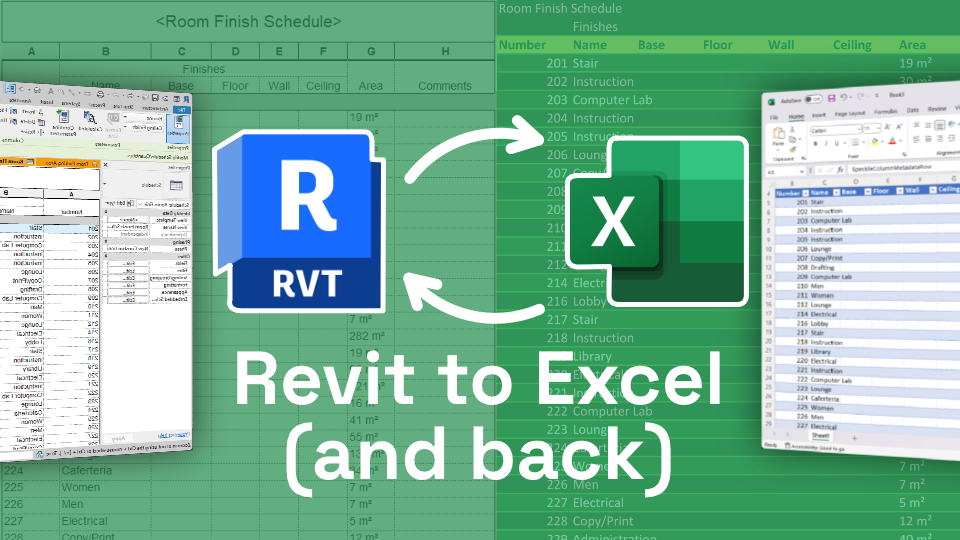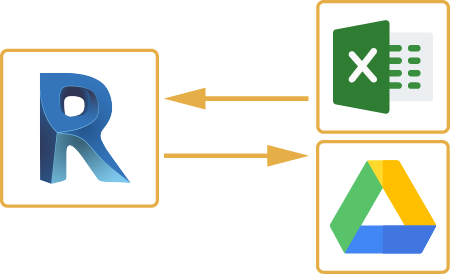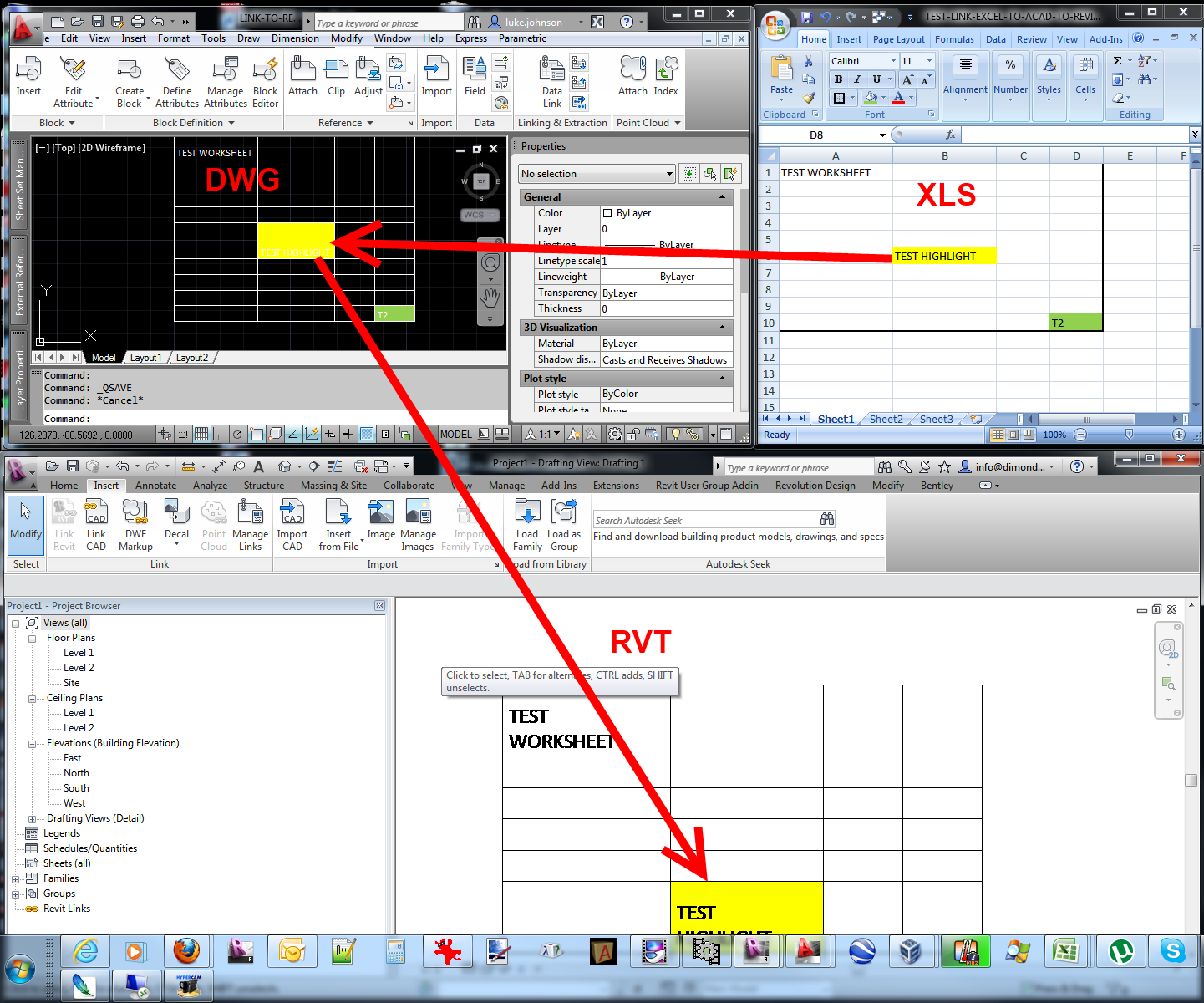Understanding the Art of Data Assimilation: How to Seamlessly Import Excel Data Into Revit
Are you struggling to import Excel data right into Revit smoothly? Look no more! In this write-up, we will guide you via the procedure of mastering the art of information assimilation. Discover the significance of smooth assimilation in Revit and explore the Excel data style for Revit assimilation. Get prepared to prepare your Excel data easily and follow our detailed overview to import documents into Revit. With our finest practices, you'll accomplish information assimilation success in a snap. Let's start!
Recognizing the Importance of Information Assimilation in Revit
Recognizing the relevance of information assimilation in Revit is essential for seamless importing of Excel files. When you integrate information from Excel right into Revit, it enables you to efficiently manage and update information throughout the whole task. This combination guarantees that your design and construction procedure is up-to-date and accurate.
By incorporating information, you can quickly import and update criteria, routines, and even geometry in Revit. This eliminates the demand for hands-on data access, conserving you time and decreasing the risk of mistakes. With Revit's information integration capacities, you can preserve consistency and precision in your project, while also boosting partnership among staff member.

Exploring the Excel File Format for Revit Integration

In order to efficiently integrate Excel files right into Revit, it is crucial to make certain that the information is formatted correctly. This consists of correctly classifying columns and rows, along with structuring the data in a means that works with Revit's data schema. Revit makes use of certain specifications and categories to arrange data, so it is important to straighten the Excel information with these parameters to make certain a smooth integration.
In addition, it is essential to note that Revit just supports particular data kinds when importing from Excel. These consist of text, numbers, and days. Any type of various other data kinds, such as formulas or conditional format, will certainly not be acknowledged by Revit and may trigger issues during the integration procedure.
Preparing Your Excel Data for Seamless Import Into Revit
To make sure a smooth integration procedure, you'll require to appropriately format and label the columns and rows in your Excel information before importing it into Revit. Because it enables Revit to accurately translate and arrange your information, this step is vital. Start by examining your Excel data and recognizing which columns and rows consist of pertinent information for your Revit job. After that, make sure to label each column with a clear and detailed header. This will help you and others quickly recognize the objective of each column and avoid confusion during the import procedure.
Following, make certain that the information in each column is correctly formatted. As an example, if you have a column for dimensions, official statement see to it that all dimensions are regularly formatted in the exact same systems of measurement. Revit relies upon constant formatting to accurately interpret and import information.
In addition, it is vital to examine for any kind of vacant cells or variances in your data. Revit may not be able to read or import data from cells that are vacant or have mistakes. It is suggested to evaluate your Excel data and clean up any kind of variances before importing it right into Revit.
Step-By-Step Overview to Importing Excel Info Into Revit
Once you have actually appropriately formatted and identified your Excel data, you can conveniently import it right into Revit by following this step-by-step overview. To begin, open Revit and browse to the "Insert" tab. Click on "Import CAD" and pick "Import Excel" from the dropdown menu. A new home window will show up, asking you to find the Excel documents you desire to import. Browse your computer system and choose the Excel data, then click "Open."
Next, a dialog box will show up, allowing you to personalize the import setups. Right here, you can pick the worksheet you want to import, define the range of cells to import, and choose the appropriate systems for your webpage information. Once you have actually made your choices, click "OK" to proceed.
Revit will now present a preview of your Excel information. Take a minute to evaluate the sneak peek and ensure that whatever looks correct. If needed, you can make changes to the import settings by clicking on the "Setups" switch.
Best Practices for Data Combination Success in Revit
Make certain you follow these finest techniques to ensure successful combination of advice information in Revit. First and foremost, it is important to arrange your information in Excel before importing it into Revit. This means making sure regular naming conventions, appropriate format, and exact information depiction. Next off, take advantage of Revit's built-in tools for data mapping. This will allow you to match the columns in your Excel data with the matching specifications in Revit. Bear in mind the data and units kinds when mapping the information, as any kind of disparities can result in mistakes in the combination procedure.
One more essential technique is to on a regular basis verify and update your information. Additionally, make usage of data recognition tools within Revit to identify any type of errors or incongruities in the integrated information.
Finally, it is recommended to develop a clear workflow for information combination. This includes specifying responsibilities and duties, setting up an interaction channel in between employee, and developing a regular tempo for data updates and reviews. By adhering to these best methods, you can ensure a successful and seamless assimilation of data in Revit, eventually boosting the efficiency and precision of your task.
Conclusion
To conclude, grasping the art of information integration is vital for smooth import of Excel files into Revit. Recognizing the importance of data integration in Revit is the initial step towards effective assimilation. Discovering the Excel file style for Revit assimilation aids in understanding the constraints and needs. Preparing the Excel data correctly and complying with a detailed overview is crucial for a smooth import process. By following finest practices, you can make sure data integration success in Revit and make the most out of your project.
When importing information from Excel right into Revit, it is crucial to comprehend the data style and how it can affect the integration procedure (revit plugins). Revit uses specific parameters and groups to arrange information, so it is essential to align the Excel data with these criteria to make certain a smooth integration
Be mindful of the information and systems types when mapping the information, as any type of discrepancies can lead to errors in the assimilation process.
Additionally, make usage of information validation devices within Revit to determine any type of errors or inconsistencies in the incorporated data.

Comments on “Revit Add Ins: Supercharge Your Style and Modeling”